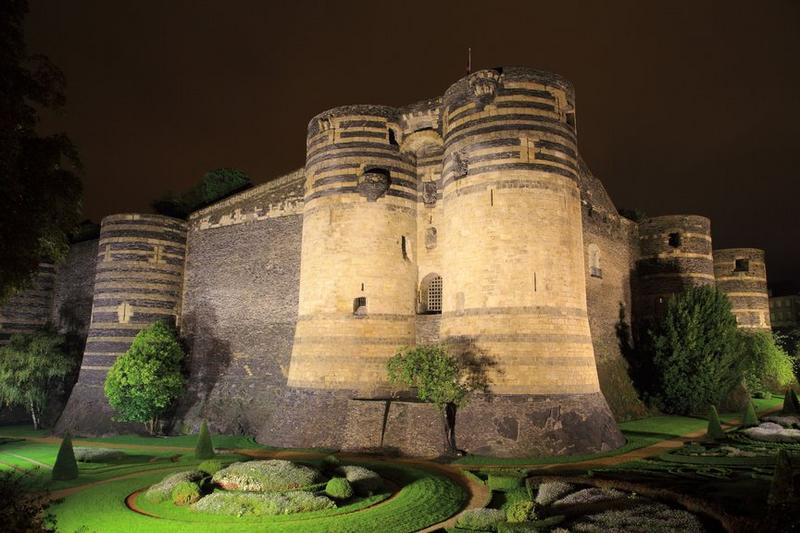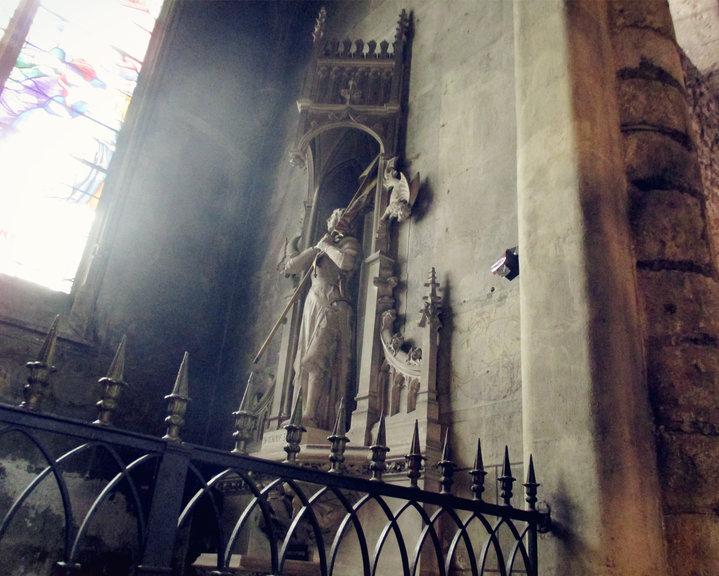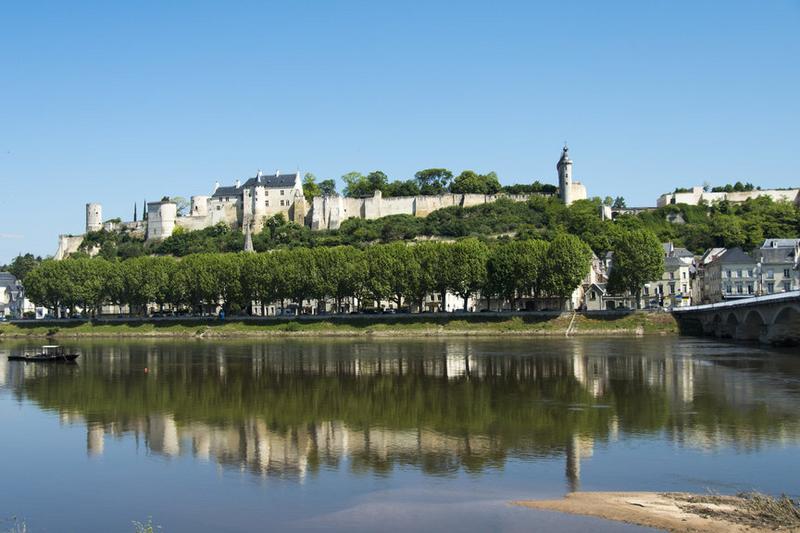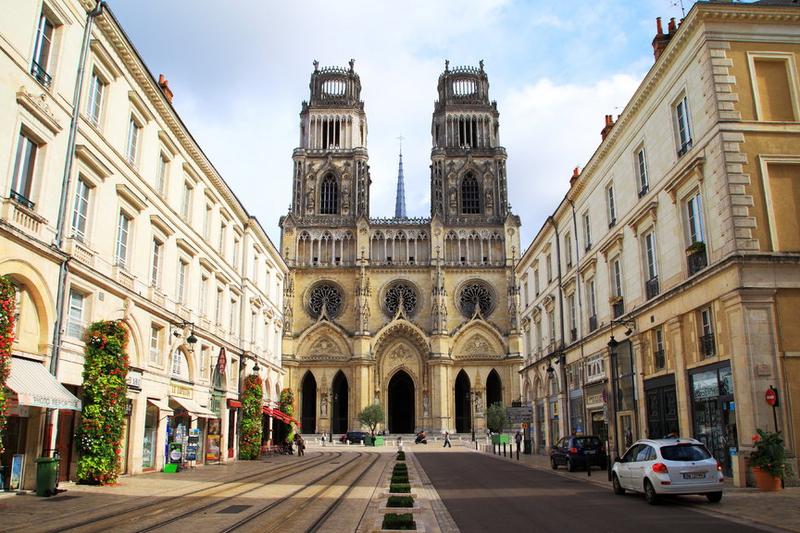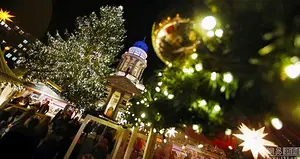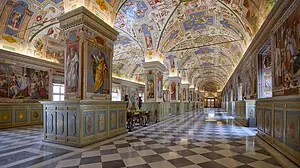8-day tour of the Loire Valley
7 cities |
36 attraction(s) |
total distance 377
km
 TIPS
TIPS
Day1
Day2
Day3
Day4
Day5
Day6
Day7
Day8
Day1: Paris
5 attraction(s) ·
6 km
1
Notre Dame Cathedral is a church located in the center of Paris, France, on the Île de la Cité. It was built between 1163 and 1250 and is an example of Gothic architecture. With a history of 850 years, the cathedral has witnessed the changes in Paris and events such as Napoleon's coronation and the wedding of Napoleon III. Victor Hugo's novel "The Hunchback of Notre Dame" has also attracted many people to climb the bell tower in search of the hunchback. Visiting the cathedral is free, but it is important to respect the local religious rituals, dress appropriately, and maintain silence. If you want to visit the bell tower, tickets can be purchased on the left side of the church, but be prepared for long queues, especially during peak season, where waiting times may exceed two hours.
2
km
2
The Louvre Museum, the former residence of the French kings, is one of the largest museums in the world. It is divided into eight departments: Oriental Antiquities, Egyptian Antiquities, Greek and Roman Antiquities, Paintings, Sculptures, Art Objects, Islamic Art, and Medieval to 1848. The Louvre was originally a fortress in the late 12th century and was later converted into a royal palace by King Francis I. It has a rich collection of art treasures, including famous Italian paintings. After the French Revolution, it was opened as a museum and has been expanded multiple times, especially during the reigns of Napoleon and Napoleon III. The Louvre is famous for its glass pyramid, designed by Chinese architect I.M. Pei in the 1980s. It houses a vast collection of artworks from different cultures and periods before 1848, including ancient Egyptian, Near Eastern, and Middle Eastern civilizations, ancient Greek and Roman civilizations, Islamic art, and works from the Middle Ages to the mid-19th century. With over 400,000 items in its collection, only about 40,000 are on display. It is recommended to plan your visit based on your preferences, with highlights including the Italian and French painting galleries, the Ancient Egypt section, the Greek and Roman art section, and the Napoleonic apartments.
2
km
3
Place de la Concorde is a large square in the heart of Paris, France, with an area of approximately 84,000 square meters. In the center of the square stands a massive Egyptian obelisk adorned with hieroglyphs praising the rule of Pharaoh Ramses II. The obelisk was originally erected at the entrance of the Luxor Temple and was gifted to France by Muhammad Ali, the Ottoman governor of Egypt, in 1829. It arrived in Paris on December 21, 1833, and was erected in the center of Place de la Concorde by King Louis-Philippe on October 25, 1836. The original apex was missing, so in 1998, the French government added a golden pyramid-shaped apex to the obelisk.
1
km
4
Tuileries Garden is located between the Louvre Museum and the Champs-Élysées, which is the heart of Paris and has a unique location. It used to be a tile factory, hence the name.
Initially, Tuileries Garden was an Italian-style garden, but later it was transformed by designer Lenôtre into a typical French garden.
The Tuileries Palace in the garden was always the royal sleeping palace, but it was destroyed during the French Revolution in 1880.
In 2005, Tuileries Garden became part of the Louvre Museum with the connection of its left and right sides, and it became an open courtyard. It is parallel to the Rue de Rivoli, with a large pond and outdoor cafes in front of it. The Musée du Jeu de Paume (museum of the game of palm) is located in the northwest corner of the royal garden, which was added by Napoleon III in 1861 for indoor tennis playing but now serves a different purpose. It is also in harmony with the Musée de l'Orangerie in another corner of the garden.
2
km
5
The Seine River is the second largest river in France, flowing through the center of Paris. It is 780 kilometers long and has a drainage area of 78,000 square kilometers. The river is constrained by artificial stone embankments in the central section of Paris, which were inscribed on the UNESCO World Heritage List in 1991. The French refer to the north bank of the Seine as the "right bank" and the south bank as the "left bank".
The Seine River in Paris is known for its numerous bridges, with the most magnificent being the Alexander III Bridge, which was a gift from Tsar Nicholas II of Russia and named after his father. Many important cultural and historical landmarks in France are located along the banks of the Seine, such as the Louvre Museum, Les Invalides, the Pantheon, the Orsay Museum, the Palace of Versailles, the Eiffel Tower, and the Arc de Triomphe. The Seine River has also nurtured many world-renowned cultural figures and is considered the mother river of Paris, a city known for its rich cultural heritage.
Day2: Paris
4 attraction(s) ·
8 km
1
The beautiful building with a large clock across the Seine River from the Tuileries Garden in front of the Louvre is the former southwest train station of Paris, which was transformed into a museum with the largest collection of Impressionist art in the world in 1986. The Musée d'Orsay, one of the three major museums in Paris, mainly collects art treasures from 1848 to 1912 (for items before 1848, it is recommended to visit the Louvre, and for art after 1912, it is recommended to visit the Pompidou Center). Some must-see masterpieces here are Vincent van Gogh's "Self-Portrait" and "The Church at Auvers", Claude Monet's "Impression, Sunrise" and "Woman with a Parasol", Jean-François Millet's "The Gleaners", Edouard Manet's "Luncheon on the Grass", Paul Cézanne's "Still Life", and numerous fine works by Pierre-Auguste Renoir, Paul Gauguin, and Pablo Picasso.
3
km
2
The Champs-Élysées is a famous avenue in Paris, located in the 8th arrondissement. It is considered to be the most beautiful street in Paris. The avenue stretches from the Arc de Triomphe in the west to the Place de la Concorde in the east. It is part of the city's central axis, along with the Arc de Triomphe du Carrousel. The avenue is often crowded and features luxury brands such as Cartier and Mont Blanc. During holidays, it is decorated with special lights and hosts events like the Bastille Day parade and the final stage of the Tour de France.
2
km
3
The full name of the Arc de Triomphe, located in the center of Place Charles-de-Gaule in Paris, is "Arc de Triomphe de l'Étoile". It was built in 1806 to celebrate a major victory in the "Battle of Austerlitz". Despite Napoleon laying the first stone, he did not live to see its completion. The French people held a funeral for him under the Arc de Triomphe 20 years after his death.
Beneath the Arc de Triomphe, there is an unknown soldier's tomb and an eternal flame in memory of the 1.5 million French soldiers who sacrificed themselves in World War I. On major holidays, a large French flag is hung on top of the Arc de Triomphe, and commemorative activities take place, such as on the anniversary of World War II on May 8th and on Armistice Day on November 11th.
The Bastille Day military parade, held every year on July 14th, starts from the Arc de Triomphe and continues to Place de la Concorde. If you want a good spot, you need to arrive early. During New Year's, the Arc de Triomphe is also a central gathering point, with a large crowd, although there are no fireworks in Paris on New Year's Eve.
The Arc de Triomphe is surrounded by twelve major avenues, with the famous Champs-Élysées, which connects to Place de la Concorde and faces the Louvre Museum, being one of them. This nearly 2-kilometer long avenue is considered one of the most beautiful streets in the world.
4
km
Day3: Angers > Tours > Angers
5 attraction(s) ·
98 km
1
Fontevraud Abbey is located in the Loire Valley region and is one of the largest monasteries in Europe. It is also the site of the largest royal necropolis of the Angevin dynasty. Fontevraud Abbey attracts visitors from around the world with its grandeur and unique architecture. In 1804, Napoleon converted it into a prison, saving it from destruction and turning it into a feared place of imprisonment. The last batch of inmates left this prison in 1985. Today, it is a cultural exchange center (named by the French Ministry of Culture) and a venue for concerts, seminars, and exhibitions. It also hosts artists who reside here and exhibit their creations.
22
km
2
Established in 1972, the Sophie National Equestrian Academy, with the world-renowned Sophie Black Knights Equestrian Troupe as its core, inherits a long and glorious history. Located in the Loire Valley region, the Sophie Black Knights Equestrian Academy is the headquarters of France's equestrian training base. The knights of the Black Knights Equestrian Troupe, senior researchers and instructors of the National Equestrian Academy, train the highest level of riders for France and even the world. Open to the public for equestrian training performances from April to October on irregular dates, please refer to the official website for specific dates.
74
km
3
The largest park in Angers, located by the Mayenne River, covering an area of 50 hectares. The largest lake in Angers is also here. Lush vegetation and different scenery throughout the year.
3
km
4
The exhibits in the art gallery showcase the historical development of Angers. The most famous exhibit is Ingres' painting "Paolo et Francesca," which is inspired by Dante's poetry.
1
km
5
The Château d'Angers is located in the Loire Valley region, in the center of Angers city. It is a huge medieval fortress with 17 towers. Built between 1228 and 1238, this fortress is a typical example of medieval architecture, with its appearance and function constantly changing over time. Inside the massive walls, you can see magnificent residences and climb the tower, Tour du Moulin, to enjoy a breathtaking garden view.
The castle also houses the famous medieval tapestry known as the "Tenture de l'Apocalypse", depicting stories from the Book of Revelation. It is one of the oldest surviving tapestries, made in Paris between approximately 1373 and 1383.
Inside the castle, there are two more tapestries in the King's Chamber: the "Tenture de la Passion" depicting the Passion of Christ, and the "Tapisseries mille-fleurs" showcasing a thousand flowers.
Day4: Poitiers
4 attraction(s) ·
18 km
2
The façade of the church is very eye-catching, although it bears the influence of Saintonge in terms of architectural style, it still exhibits obvious Poitiers-style Romanesque features, with finely crafted decorative sculptures. The façade was restored between 1992 and 1995.
1
km
3
St. Pierre Cathedral, also known as the "Poitiers Cathedral," was built between 1162-1271. The tower on its western facade dates back to the 14th-15th century. The high altar of the church is surrounded by 13th-century stained glass depicting various scenes of suffering.
14
km
4
Futuroscope de Poitiers, which opened in 1987, is a theme park located in the Vienne department. The park covers an area of 110 hectares and showcases over 25 high-tech attractions related to imagery.
Day5: Tours
4 attraction(s) ·
2 km
1
Located at 8 Rue Nationale in the heart of the old town, very close to the Loire River. Part of St. Julien Church, it houses some interesting items related to the life of the old people of Tours and the apprenticeship system of craftsmen, including a violin made of chocolate and a large wooden shoe that can be used as a baby bed, which were used as gimmicks to attract customers in shops back in the day.
1
km
2
St. Gatien Cathedral is an iconic Gothic building in Tours, constructed over a period of 300 years from the 13th to the 16th century. As a result, different parts of the church exhibit various architectural styles. The twin towers soar into the sky, and the arches and flying buttresses on either side, along with the stone gargoyle carvings on the exterior walls, are truly impressive. Inside the church, there are marble tombs made specifically for the two children of Charles VIII, crafted by the most renowned sculptor in the Tours region at the time, Michel Colombe. A highlight of the church is the exquisitely made rose windows, which date back to the 13th century. Additionally, there is a monastery, the Psalette Monastery, located to the north of the church, built in the 15th century.
1
km
3
The Tur Gallery is located in the courtyard of a 17th-century bishop's palace. The beautifully decorated exhibition halls of this art museum house many masterpieces from art history, including numerous works by Delacroix, Monet, and Degas. Outside the gate, there is a meticulously manicured courtyard, with a thousand-year-old cedar tree in the middle.
1
km
4
The City Hall of Tours is located on Heurteloup Street, the main road of Tours, facing Jeanne d'Arc Square. The City Hall has a beautiful design and features a rare circular 12-hour clock and a bell tower in Europe. Completed in 1904, the City Hall of Tours was a representative building at that time. During the Second World War from June 13th to 15th, 1940, the French government was located here. British politician Winston Churchill tried to persuade French Prime Minister Paul Reynaud not to negotiate a ceasefire with Germany, but was unsuccessful.
Day6: Tours > Amboise
4 attraction(s) ·
91 km
1
Château de Chinon is more of a military fortress than a castle. It was originally built by Count Theobald I of Blois in 954 during the Valois dynasty. The entire castle is situated on a cliff of rocks. In the late 12th century, Henry II Curmantle moved to Chinon and turned it into a fortress. Chinon Castle holds great strategic importance in the Loire Valley. It was surrounded by thick defensive walls due to its strategic significance in the Middle Ages. It was also the favorite residence of the English kings during the Plantagenet dynasty. Notably, Joan of Arc first met King Charles VII at Chinon Castle and persuaded him to drive the English army out of France. Shortly after, she helped crown him as the king of France in Reims. Today, Chinon Castle is a relic, but its former grandeur can still be felt from a distance.
27
km
2
The Château d'Angers is located in the central Loire Valley region, at the border of the departments of Maine-et-Loire and Indre-et-Loire. It consists of two parts: the Forteresse de Foulques d'Anjou and the Château de Louis XI. The Forteresse de Foulques d'Anjou is the oldest tower in France, while the Château de Louis XI combines two different architectural styles, with the side facing the city showcasing the architectural style of the feudal era and the side facing the courtyard displaying the influence of Renaissance art.
64
km
3
This castle, built in the 15th century, combines the Gothic and Renaissance styles. King Francis I of the Valois dynasty was born and raised in the royal castle of Amboise. Many significant historical events that influenced France and even Europe took place here, as it was a royal castle. Compared to Château de Chenonceau and Château de Chambord, the interior decoration of this castle is less striking, even appearing dull and empty. However, the view overlooking Amboise from inside the castle is excellent. Situated by the riverbank, the gardens of Château d'Amboise are arranged in terraces, gradually revealing the most beautiful scenery of the river valley.
Of course, most visitors come to Château d'Amboise not for the French Renaissance creator, but for an Italian man - Leonardo da Vinci. The famous painter rests in the Saint-Hubert Chapel within the castle walls. Invited by the French king, Leonardo spent his final years there, and it is said that he died in the arms of King Francis I. The small chapel is filled with stained glass, and when you look down, you can see a stone tablet bearing Leonardo da Vinci's name.
1
km
4
Château du Clos Lucé, also known as Leonardo da Vinci Park, is a typical Renaissance pink brick structure located in Amboise. It was the last residence of Leonardo da Vinci, where he spent his final years and passed away in the arms of King Francis I of France.
In da Vinci's final dwelling, his bedroom and living room remain as they were 500 years ago. It is as if you could expect to see the bearded and gray-haired da Vinci entering the room at any moment. His studio, on the other hand, is a truly awe-inspiring place, showcasing the prototypes of all his creative inventions. His 40 inventions span various areas such as military, urban planning, mechanics, aviation, and hydraulics.
Leaving the castle, you enter the Leonardo da Vinci themed park. The wooded paths are designed to showcase his extraordinary talents. The plants depicted in his drawings grow vividly here, and his studies in geology and fluid dynamics are brought to life through drawings and models in the park. Some of the landscape designs in the park are also created by da Vinci himself. The park also houses a museum and exhibition hall, which regularly hosts various exhibitions centered around da Vinci, including "The Last Supper," "The Enigmatic Mona Lisa," and "Nature and Landscapes."
Day7: Blois
4 attraction(s) ·
20 km
1
The Château de Blois is located in the city center of Blois. It showcases the art and history of the Loire Valley castles, with 7 kings and 10 queens of France having stayed here. The castle displays the authority of the French royal family during the Renaissance period and depicts the daily life in the court. Its colorful interior decorations and exquisite royal bedrooms narrate the past glory. The magnificent architecture of the Château de Blois reminds one of the numerous castles in the Loire Valley from the Middle Ages to the 17th century. The castle's four wings showcase four different styles, and the impressive François I staircase overlooks the courtyard. In addition, the castle houses an art museum that exhibits paintings and sculptures from the 14th to the 16th centuries.
2
km
2
Although the old town of Blois was almost completely destroyed during World War II, the restored city architecture is still worth a visit. Especially the bell tower of the church, which shines brightly under the evening light projection. Across from the church is the home of acrobats (Maison Des Acrobates, 3bis Rue Pierre De Blois), decorated with medieval clown wood carvings, one of the few surviving 15th-century houses during the war.
3
km
3
The Bishop's Garden is located east of the Saint-Louis Cathedral, where you can enjoy spectacular views of the Loire and Blavet rivers.
16
km
4
Here, you can escape from the trivialities of everyday life and return to nature completely. Hidden in the jungle of the pristine Loire Valley region are undomesticated deer, wild boars, and the magnificent Château de Chambord, the grandest castle in all of France. Just under two hours' drive from southern Paris, it serves as the key to unlocking the door to the Loire Valley. Château de Chambord is the most magnificent and grandiose castle of the French Renaissance, a must-visit stop on the journey through the Loire Valley and a perfect blend of medieval inheritance and innovative architecture from the Italian Renaissance period. It is estimated to be the most famous of all the Loire castles, thanks to a French king and an Italian painter, François I and da Vinci. In 1516, this art-loving king invited the esteemed master da Vinci to reside in his castle, marking the beginning of the French Renaissance movement. Starting with Château de Chambord, the castles of the Loire Valley no longer had defensive functions of the medieval era. The imposing high walls disappeared, replaced by large, bright windows in Italian style. Château de Chambord encompasses proportion and harmony, grandeur and elegance, truly deserving the title of king of the Loire Valley castles. The most famous feature of Château de Chambord is the double spiral staircase in the hall, rumored to have been designed by da Vinci. Its purpose was to prevent awkward encounters between François's queen and his mistresses when they went up and down the stairs. As a hunting palace, Château de Chambord boasts numerous impressive records: 156 meters long, 56 meters tall, 77 staircases, 282 chimneys, and 426 rooms. Among all the construction materials used, the soft and delicate limestone from the Loire Valley region stands out, making it appear more naturally integrated compared to other castles. It's worth mentioning the 1000-hectare forest area surrounding Château de Chambord on the national estate, lush, tranquil, and beautiful.
Day8: Orleans > Paris
6 attraction(s) ·
137 km
1
Jeanne d'Arc Street is located on the west side of the Holy Cross Church, facing the church, and is the best place to view the church. It is an exquisite shopping street in a new medieval style, with many surrounding shops.
1
km
2
The Gothic Orleans Cathedral (Cathedrale Ste-Croix) was built in the early 17th century, ordered by Henry IV, and later renovated and expanded by successive kings. The church was officially established in 1858. A set of stained glass windows in the nave depicts the legendary life of Saint Joan of Arc.
1
km
3
The Musee des Beaux-Arts in Orleans exhibits many national treasures, including a collection of 18th-century watercolor portraits, Claude Deruet's "The Fourth Element" from the French Baroque period, and a large statue of Saint Joan of Arc.
1
km
4
The Place du Martroi is the main square in Orleans, with a statue of Saint Joan of Arc on horseback. In June 1940, part of the buildings were destroyed by bombing and were later rebuilt after the war.
2
km
5
The George V Bridge spans the Loire River, with a length of 325 meters. It was built between 1751 and 1760, and the bridge consists of many arches. The designer of the bridge was Jean Hupeau.
134
km
6
The Eiffel Tower, built in 1889, was originally constructed to welcome the World Exposition and commemorate the 100th anniversary of the French Revolution. Standing at a total height of 324 meters, it symbolized the industrial revolution that swept the world at that time. However, after its completion, it faced skepticism from many French people. Its massive steel structure seemed out of place in the entire city of Paris, and some even proposed demolishing it. However, today it has become an undisputed symbol of Paris and France.
Visitors can take the elevator or climb the stairs to the tower to overlook the entire city of Paris (stairs only go up to the second floor). From dusk to dawn after the turn of the millennium (2:00 in summer, 1:00 in winter), the tower sparkles for ten minutes on the hour. During special holiday events, it may have special colors, such as flashing red during the Chinese New Year or blue on European Union Day. On July 14th, the National Day, visitors can enjoy concerts on the Champ de Mars, the square beneath the tower, and it is also a great spot for New Year's countdown.
There are two restaurants on the tower, Tour Eiffel 58 on the first floor and Jules Verne, a Michelin one-star restaurant, on the second floor. The advantage of dining on the tower is that the restaurants can assist with reservations or provide tickets to go up the tower, eliminating the need to queue below. As for these two restaurants, Tour Eiffel 58 offers lunch starting from 19 Euros (mainly sandwiches), and dinner starting from 80 Euros, like a regular restaurant with a significant service charge. On the other hand, Jules Verne, now with only one Michelin star and overseen by chef Alain Ducasse, offers lunch starting from 90 Euros and dinner starting from around 300 Euros per person. If not for the experience of the environment, the author suggests exploring other three-star Michelin restaurants at a similar price but with better food. However, due to their special location, it is not easy to dine there, and it is best to make reservations at least two months in advance during peak season.













